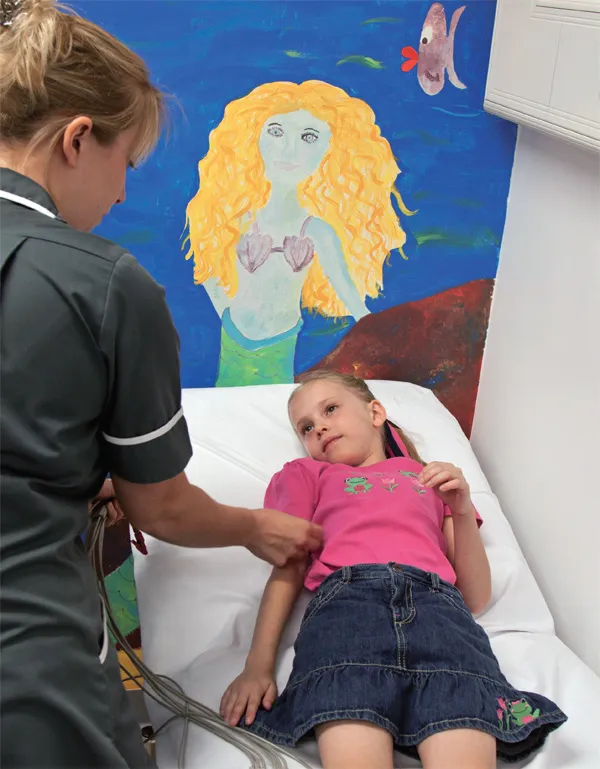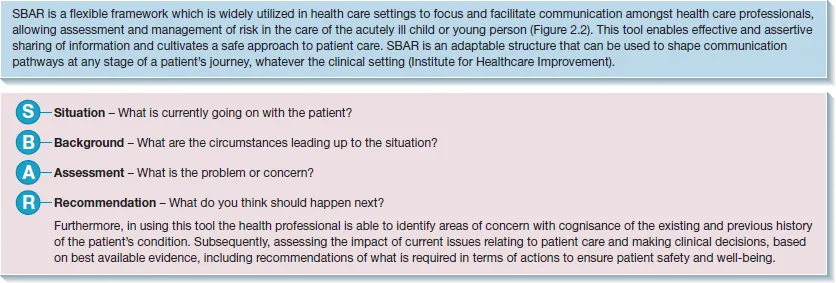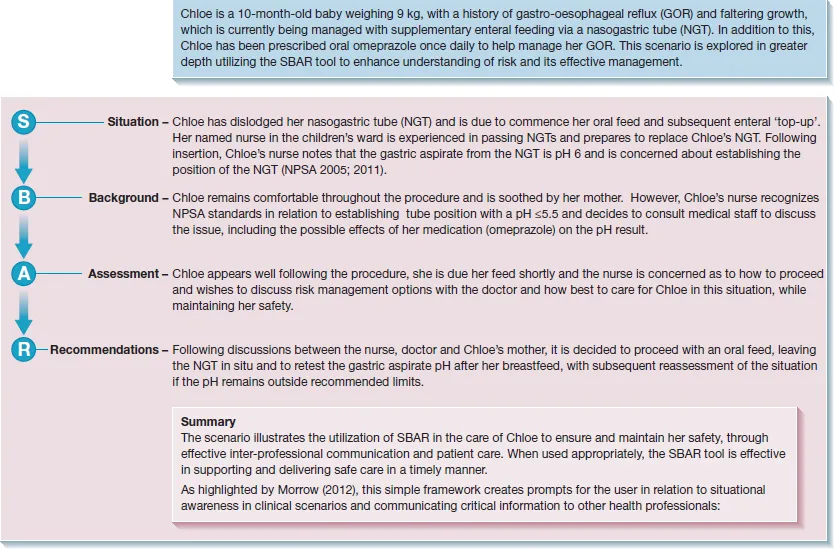
eBook - ePub
Children and Young People's Nursing at a Glance
Alan Glasper, Jane Coad, Jim Richardson, Alan Glasper, Jane Coad, Jim Richardson
This is a test
Buch teilen
- English
- ePUB (handyfreundlich)
- Über iOS und Android verfügbar
eBook - ePub
Children and Young People's Nursing at a Glance
Alan Glasper, Jane Coad, Jim Richardson, Alan Glasper, Jane Coad, Jim Richardson
Angaben zum Buch
Buchvorschau
Inhaltsverzeichnis
Quellenangaben
Über dieses Buch
Children and Young People's Nursing at a Glance, is the perfect companion for study and revision for pre-registration children's nursing students from the publishers of the market-leading at a Glance series. Divided into seven sections it explores assessment and screening, working with families, the newborn infant, the developing child, child health policy, nursing the sick child and young person and chronic and life-limiting conditions.
This comprehensive book is an invaluable resource for pre-registration nursing students as well as newly qualified nurses wanting to consolidate and expand their knowledge of children and young people's nursing.
- Breaks down complex aspects of child health care in an accessible and un-intimidating way
- The perfect revision and consolidation textbook
- Linked closely with the NMC standards for pre-registration nursing education, and the essential skills clusters framework
- Highly visual colour presentation, with approximately 130 illustrations
- Includes boxes, summary boxes, key points and recommendations for practice to improve the learning experience
- Supported by a companion website featuring over 500 interactive multiple choice questions ( www.ataglanceseries.com/nursing/children )
- Available in a range of digital formats - perfect for 'on the go' study and revision
Häufig gestellte Fragen
Wie kann ich mein Abo kündigen?
Gehe einfach zum Kontobereich in den Einstellungen und klicke auf „Abo kündigen“ – ganz einfach. Nachdem du gekündigt hast, bleibt deine Mitgliedschaft für den verbleibenden Abozeitraum, den du bereits bezahlt hast, aktiv. Mehr Informationen hier.
(Wie) Kann ich Bücher herunterladen?
Derzeit stehen all unsere auf Mobilgeräte reagierenden ePub-Bücher zum Download über die App zur Verfügung. Die meisten unserer PDFs stehen ebenfalls zum Download bereit; wir arbeiten daran, auch die übrigen PDFs zum Download anzubieten, bei denen dies aktuell noch nicht möglich ist. Weitere Informationen hier.
Welcher Unterschied besteht bei den Preisen zwischen den Aboplänen?
Mit beiden Aboplänen erhältst du vollen Zugang zur Bibliothek und allen Funktionen von Perlego. Die einzigen Unterschiede bestehen im Preis und dem Abozeitraum: Mit dem Jahresabo sparst du auf 12 Monate gerechnet im Vergleich zum Monatsabo rund 30 %.
Was ist Perlego?
Wir sind ein Online-Abodienst für Lehrbücher, bei dem du für weniger als den Preis eines einzelnen Buches pro Monat Zugang zu einer ganzen Online-Bibliothek erhältst. Mit über 1 Million Büchern zu über 1.000 verschiedenen Themen haben wir bestimmt alles, was du brauchst! Weitere Informationen hier.
Unterstützt Perlego Text-zu-Sprache?
Achte auf das Symbol zum Vorlesen in deinem nächsten Buch, um zu sehen, ob du es dir auch anhören kannst. Bei diesem Tool wird dir Text laut vorgelesen, wobei der Text beim Vorlesen auch grafisch hervorgehoben wird. Du kannst das Vorlesen jederzeit anhalten, beschleunigen und verlangsamen. Weitere Informationen hier.
Ist Children and Young People's Nursing at a Glance als Online-PDF/ePub verfügbar?
Ja, du hast Zugang zu Children and Young People's Nursing at a Glance von Alan Glasper, Jane Coad, Jim Richardson, Alan Glasper, Jane Coad, Jim Richardson im PDF- und/oder ePub-Format sowie zu anderen beliebten Büchern aus Médecine & Soins infirmiers en pédiatrie. Aus unserem Katalog stehen dir über 1 Million Bücher zur Verfügung.
Information

Part 1
Assessment and screening

1
Assessment of the child

Figure 1.1 Assessment of the child
Assessment is the collection of data, both subjective and objective, which aims to achieve a complete picture of the child’s health status. Good assessment is a combination of the interpretation of physical data with the information gained from observation of the child and family and from listening to them.
Interviewing – history taking
Gaining the trust of the child and family is an essential element in developing of an effective therapeutic relationship. Introducing yourself to the child and family with explanations of expected outcomes will put the child and family at ease. Age appropriate language should be used. Questions should be directed at both the child and parent. Young people should have an opportunity to talk in private if they wish. When taking a history, a structured approach should be used. This needs to include:
- Presenting complaint
- History of presenting complaint
- Past medical history (birth and neonatal history in infants and young children), immunizations, illnesses and hospitalizations
- Allergies
- Current medication
- Developmental history
- Family history
- Social history – nursery, school.
Observation – subjective data
Subjective data are what the child and parent say along with the visual information gained from the initial encounter with the child and family or while obtaining objective data (physical examination and recording of vital signs). This includes noting:
- The colour of the child: are they pale, mottled, cyanosed, jaundiced, flushed
- Behaviour: alert, crying, agitated, combative, lethargic, drowsy
- Interaction with parents/carers/strangers
- Interaction with environment, wanting to play or sleepy
- Position: normal, floppy or stiff
- The general appearance of the child: e.g. unkempt or clean
- Obvious birthmarks, bruises or rashes
- Dysmorphic features.
Measuring – objective data
All infants and children require a baseline physical assessment. This is a multifaceted process and some aspects are common to all children who require assessment of their health status. The physical assessment is concerned with the analysis and interpretation of data. Privacy and dignity should be maintained during this process. Consent should be obtained prior to undertaking a physical assessment.
Physical assessment includes:
- Basic physical recordings of temperature, pulse rate, respiratory rate, oxygen saturation and blood pressure
- Respiratory assessment, rate of breathing, depth of breathing, noise of breathing, presence of cough, chest movement, nasal flaring, use of other accessory muscles, child’s colour, ability to speak/feed, position of the child, peak flow and oxygen saturation level
- Heart rate including pulse volume
- Capillary refill time
- Neurological status using Glasgow coma scale or AVPU
- Level of hydration: obvious signs of dehydration include sunken anterior fontanelle, dull sunken eyes, dry oral mucosa, lethargy, weak cry, decreased urinary output
- Weight
- Height/length
- Head circumference
- Skin assessment using recognized pressure risk assessment tool
- Urinalysis.
All findings need to be documented as they are a legal record of the nursing assessment, the foundation on which care is planned and the basis of communication with multidisciplinary team.
Summary
Assessment is a dynamic continuous process that needs to include the child’s and parentor carer’s perspectives. Observation is as essential as physical assessment and good communication skills are important.
2
SBAR framework

Figure 2.1 SBAR framework

Figure 2.2 Simulated scenario using the SBAR tool
Inter-professional working
SBAR is a valuable communication tool when used either uniprofessionally or inter-professionally. For example during clinical placement the practice mentor may utilise this SBAR tool to provide feedback on the nursing student’s ability to prioritise using this flexible framework, when reporting on a patients’ condition and on their theoretical knowledge and problem-solving skills.
Additionally, effective understanding of collaboration and inter-professional working are essential elements within healthcare education and practice. During simulated inter-professional learning sessions, nursing and medical students are encouraged to reflect upon this situational briefing tool, which guides them to communicate important information in a predictable ...